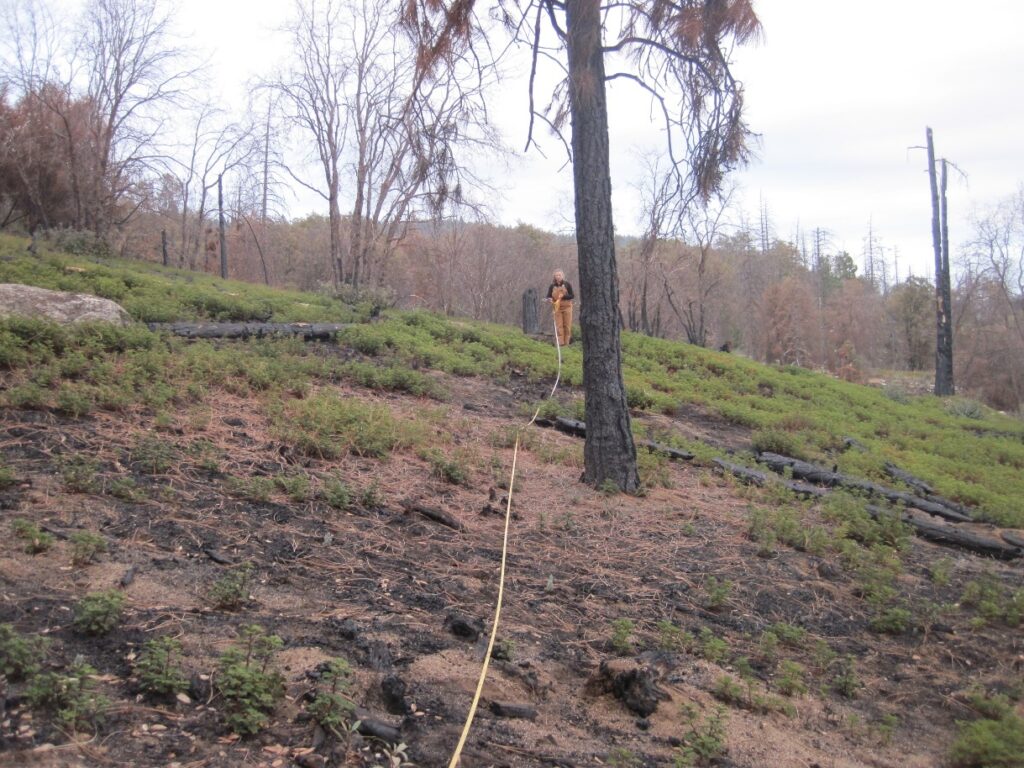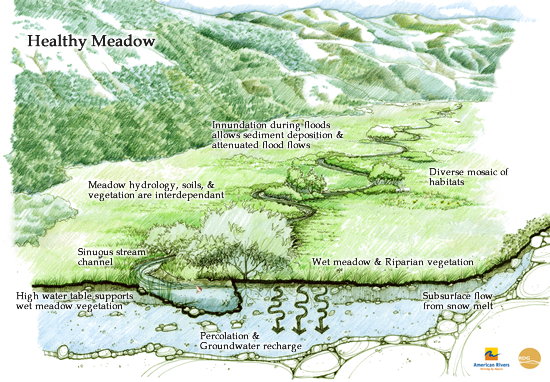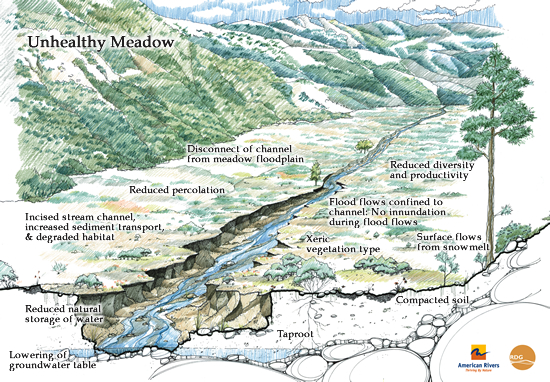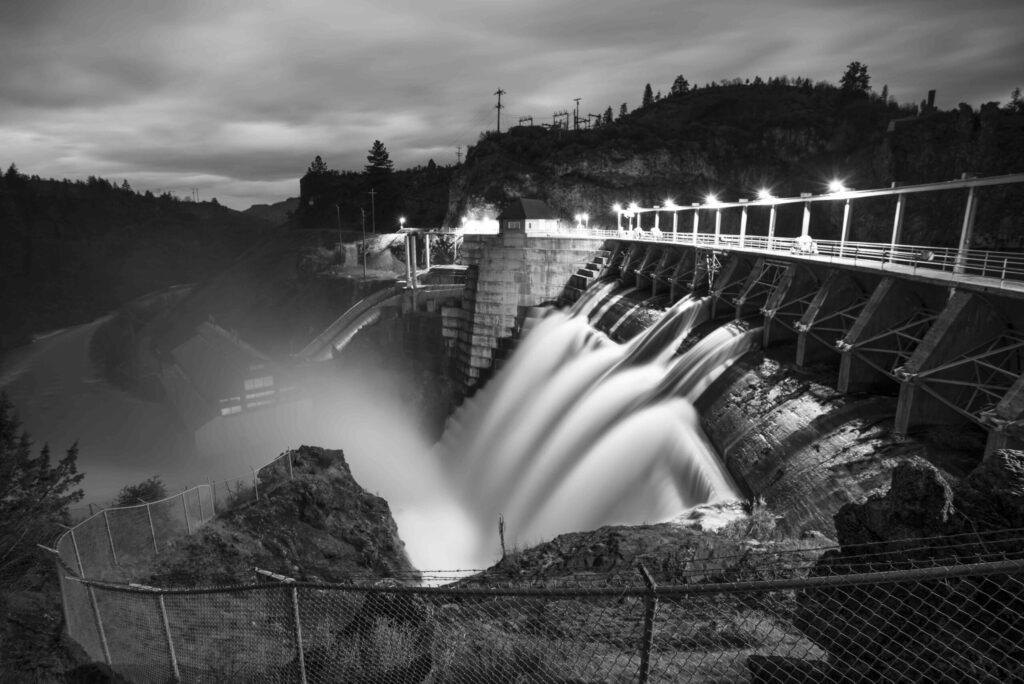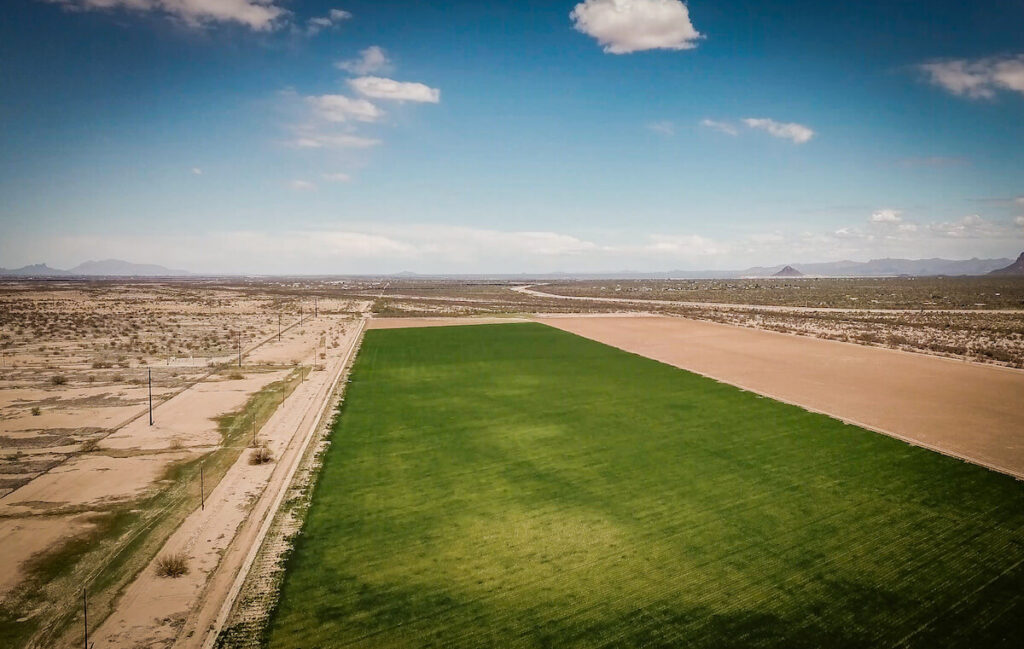California Headwaters
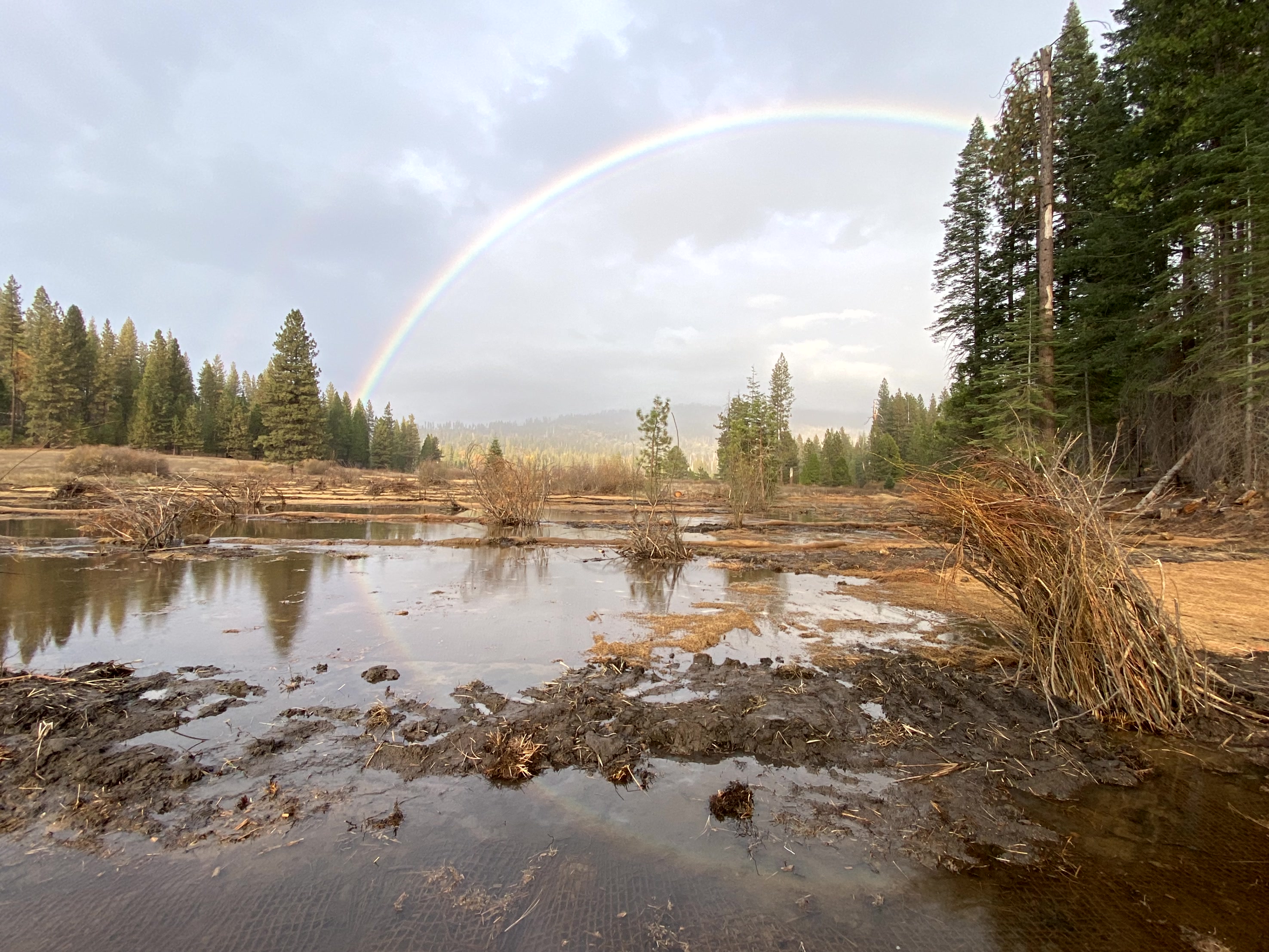
California relies on its headwaters in the Sierra Nevada to provide a steady clean water supply to downstream users, essential habitat for native species, and recreation for nature lovers.
Rivers are an integral part of the broader landscape. We take an integrated approach to watershed management, and our projects are driven by the understanding that rivers do not exist in isolation from their surroundings and that healing a river needs to begin at its source. To improve river health, we restore precious meadows of the Sierra Nevada, mitigate the impacts of human activity such as sedimentation from roads, and reduce wildfire risk through fuel management. American Rivers works towards the goal of a healthy and resilient Sierra Nevada by engaging a diverse range of partners to conduct research-driven project planning, design, and implementation.
Meadow Restoration in the Sierra Nevada
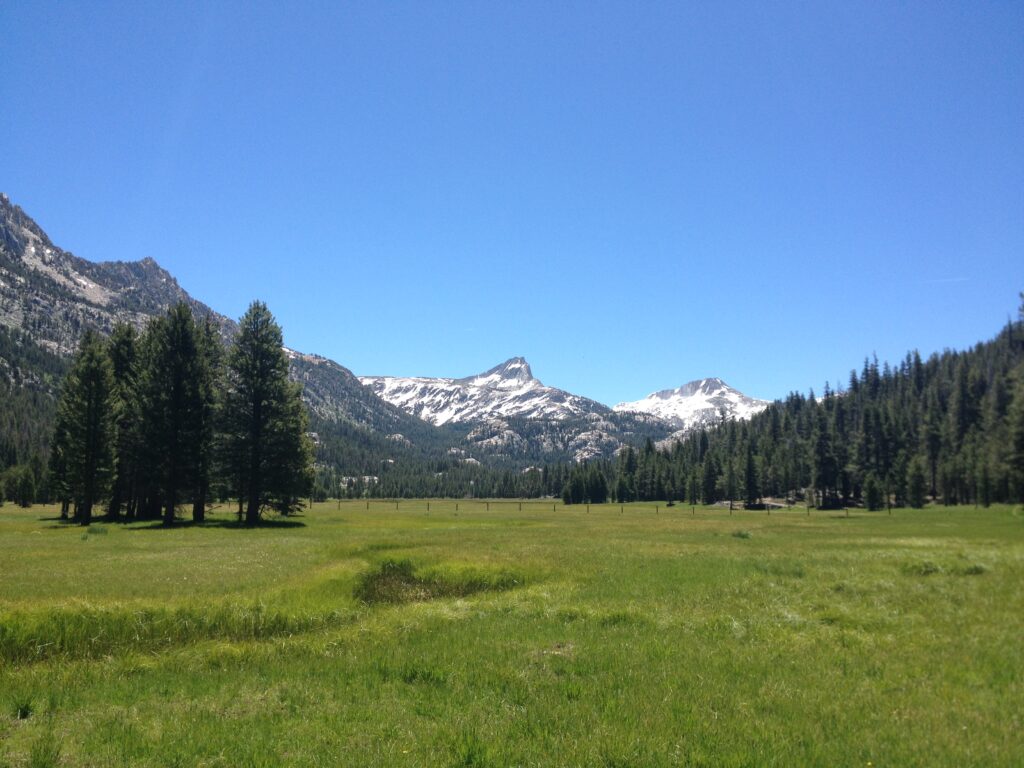
Meadow restoration comprises the bulk of American Rivers’ work in California’s headwaters, and for good reason. Mountain meadows carpet just 191,000 acres of the Sierra Nevada, yet play an outsized role in maintaining ecological health – healthy meadows create a steady and clean water supply through filtration and groundwater storage, provide critical habit to the species that call the Sierra Nevada home, sequester carbon from the atmosphere, and provide localized fire-resilience. With roughly 50% of the Sierra Nevada’s meadows in a state of degradation due to historic land use practices, we are working to scale mountain meadow restoration through strong partnerships such as the Sierra Meadows Partnership (SMP) and Klamath Meadows Partnership (KMP) and innovative project implementation and design.
Wildfire Risk Reduction
Fire has been a fundamental force in California’s ecology for millennia, with indigenous peoples skillfully using fire to shape the landscape and promote biodiversity. At low to moderate intensity, fire is a beneficial process for forests and rivers. However, the combined effects of climate change and a century of fire suppression and poor forest practices by Euro-American settlers have led to a buildup of fuels in California’s forests, creating conditions that are conducive to larger and more intense wildfires than those typically observed in the state’s historical record. These fires are having significant, detrimental impacts on communities, forests, rivers, and clean water supply. High severity wildfire removes vegetation critical for providing shade and anchoring sediment, resulting in increased instream temperatures, increased erosion, and sedimentation into rivers, impaired water quality, and reduced reservoir function and capacity. This impairs waterways for aquatic species and water supply for downstream communities.
To address the threat that high-severity wildfire poses to rivers, American Rivers is engaging in strategic “river smart” fuels management efforts to protect rivers and communities, that aim to reduce wildfire risk and improve forest health, while also protecting and enhancing the health of rivers and watersheds. Fuels management is the process of removing excess vegetation through by thinning vegetation and burning in forested areas. These practices improve forest health and increase community, landscape, and watershed resilience to the effects of wildfires. Fuels management over less than 10% of a watershed can have a significant impact on water supply while simultaneously reducing wildfire risk. American Rivers is engaged in both local and landscape-scale efforts to reduce the unhealthy build-up of fuels to mitigate the impacts of high-severity fires for local and downstream communities, and river ecosystems.
Repairing Roads of the Headwaters
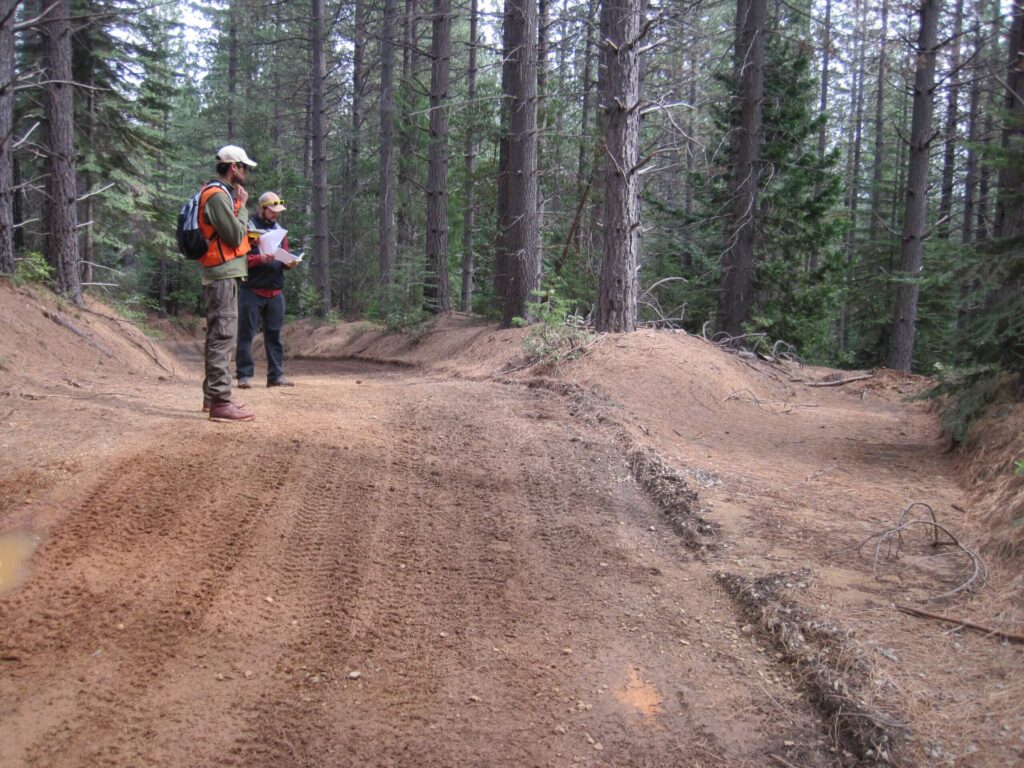
California’s watersheds include nearly 47,000 miles of public forest roads. While these provide important access to the Sierra Nevada for recreation and firefighting, this road network impairs water quality by transporting eroded sediment and runoff into tributaries and rivers. In fact, forest roads are a leading source of chronic sediment pollution in California’s headwaters. Even a quarter mile of dirt road could be losing 20 to 40 tons of sediment every year. That’s three to five dump trucks annually!
Fortunately, there are road improvements we can make that help reduce sediment transport to waterways. First, we can decommission forest roads; restoring the topography and natural processes that the road disrupted. This is ideal for roads that are no longer in use, are redundant, or that cross sensitive habitats like mountain meadows. Where decommissioning is not feasible, we can still make significant improvements to our forest roads through drainage treatments like adding gravel, constructing features that direct and disburse runoff (e.g., rolling dips and water bars), and replacing or removing undersized culverts. These features all help to make the road “hydrologically neutral” and disconnect the road drainage system from nearby waterways.
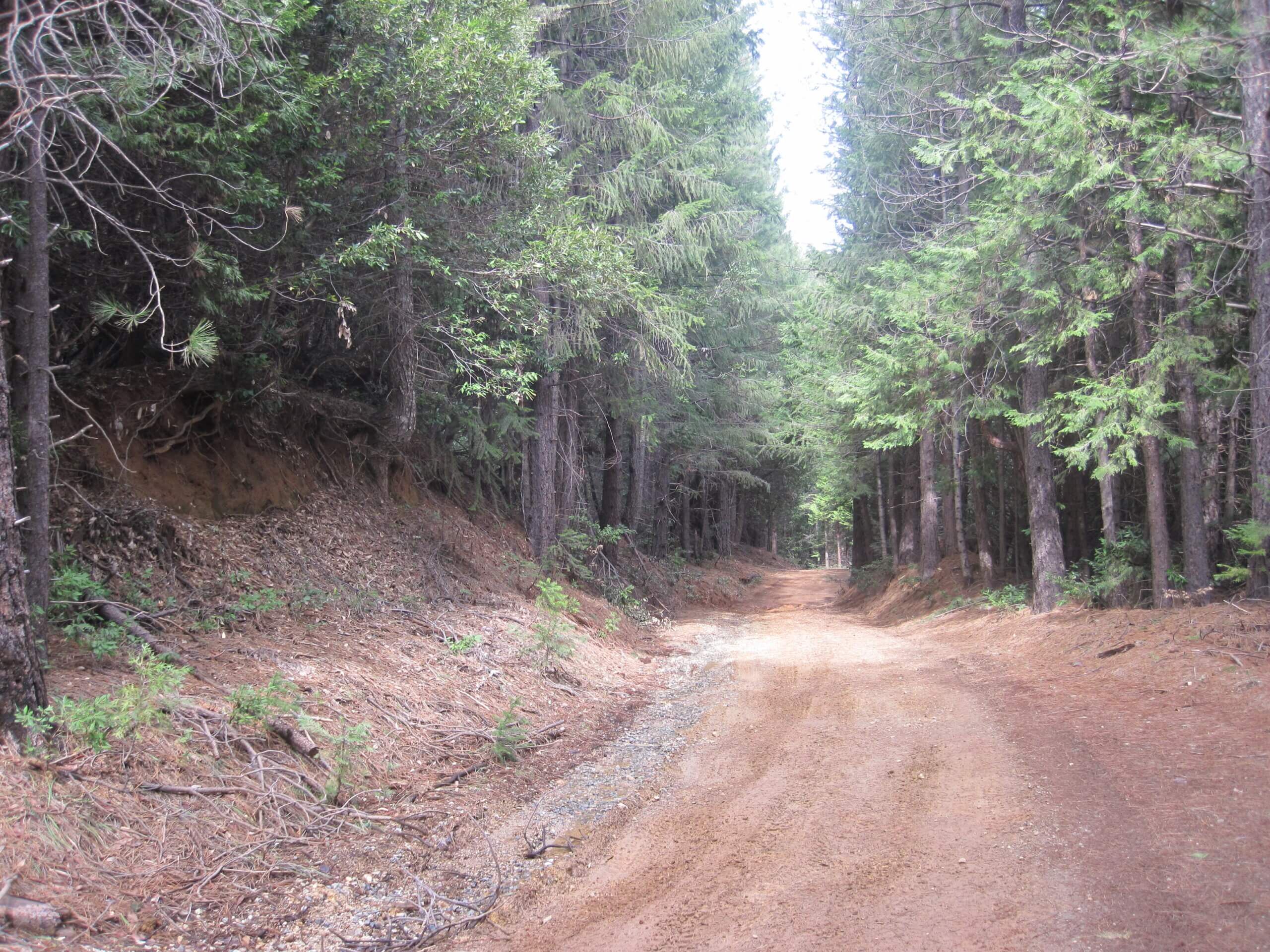

American Rivers is working with partners in the Sierra Nevada to improve our forest road system by piloting assessment and repair techniques and working to integrate road repairs into landscape-scale forest resilience efforts.
Partnerships
American Rivers fosters partnership building and collaboration to help ensure the resiliency of California’s rivers and water supply.
Sierra Meadows Partnership Leadership
American Rivers is a founding member and co-leader of the Sierra Meadows Partnership, a collaborative of private, state, and federal land managers, advocacy groups, restoration practitioners, land trusts, and research institutions that work collaboratively to increase the pace, scale, and efficacy of meadow restoration throughout the Sierra Nevada region. The Partnership developed and implements the Sierra Meadows Strategy, an “all-lands and all-hands” approach with an overarching goal of restoring and/or protecting 30,000 acres of meadow in the Sierra Nevada. The Sierra Meadows Partnership has worked to develop methods for prioritizing projects, address regulatory hurdles, and standardize monitoring to quantify benefits at the regional scale. The Sierra Meadows Partnership is working to increase and diversify institutional and partnership capacity for meadow restoration and protection in the Sierra by engaging indigenous voices and perspectives in on-the-ground projects and partnerships. We also foster region-scale collaboration, resulting in knowledge transfer and resource sharing to benefit the watersheds of the Sierra Nevada. In 2023, the Sierra Meadows Partnership secured $24 million from the California Wildlife Conservation Board to advance the goals of the Sierra Meadows Strategy, which included $1.6 million earmarked specifically for Indigenous-led projects.
Healthy Eldorado Partnership (HELP)
American Rivers is engaged in the Healthy Eldorado Landscape Partnership (HELP) with the Eldorado National Forest in the central Sierra Nevada. HELP was formed in 2021 to accelerate landscape-scale forest resilience efforts included in the Eldorado Forest Resilience Strategy, including the protection and restoration of forest and watershed resources. Partners work collaboratively to fund and implement integrated meadow and watershed restoration, road repairs and fuel reduction work across the landscape to build resiliency to climate change and wildfires.
Eagle Lake Partnership (ELP)
American Rivers is engaged in the Eagle Lake Partnership (ELP) with the Lassen National Forest (LNF) in the northern Sierra. American Rivers, LNF, and partners built off their successful track record of river and meadow restoration to initiate the ELP in 2022. The ELP is working to advance large-scale restoration efforts, with a focus on increasing the resiliency and function of the Pine Creek watershed, the primary spawning tributary for the endemic Eagle Lake rainbow trout. The ELP is taking an integrated approach to watershed restoration by addressing forest health, meadow and river restoration, and road remediation, all while infusing indigenous traditional ecological knowledge.
Current Projects
Ackerson Meadow Restoration Project
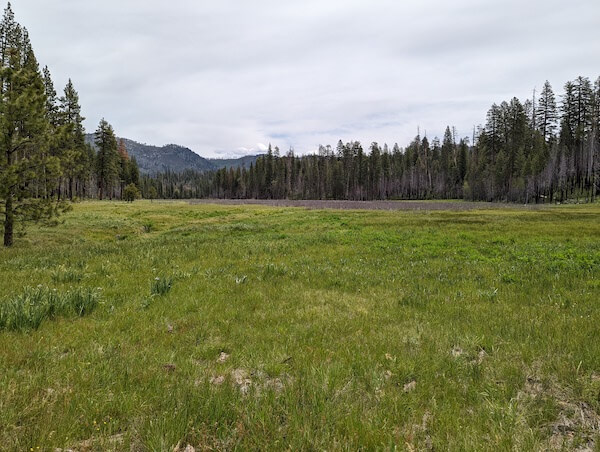
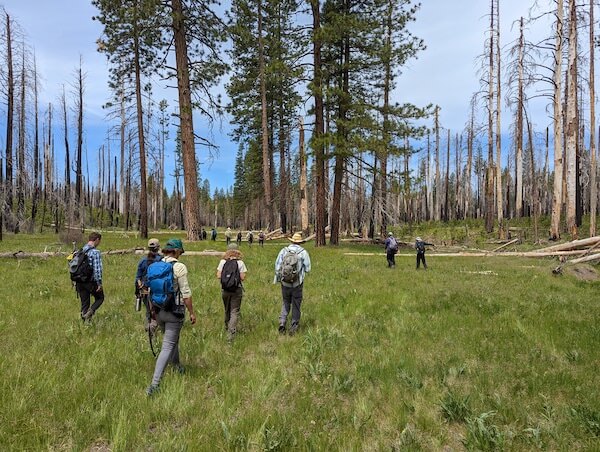
Ackerson Meadow sits on the western edge of Yosemite National Park in the Tuolumne River watershed and is home to a wide range of native avian, plant, and fish species. It is one of the largest low-elevation montane meadows in public ownership in the Sierra and an important diverse wildlife corridor. However, when Ackerson Meadow was privately owned, grazing and ditching led to the degradation of the meadow over decades, creating an incised channel that drains the meadow and prevents it from serving its key ecological functions. The Ackerson Meadow Restoration Project will raise the streambed and water table reconnecting the meadow floodplain to slow and spread flows across the meadow, allowing for increased groundwater recharge and storage, tempered peak flows and improved flood protection downstream, and enhanced baseflow and improved late season water supply.
The Ackerson Meadow Restoration project is a wet meadow and riparian habitat restoration project with extraordinary benefits for migratory and breeding birds, State and Federal listed species, and species of special concern. Restoring Ackerson Meadow will provide multiple benefits for climate resiliency, water quality and supply, flood attenuation, carbon sequestration, and biodiversity including State and Federally listed species.
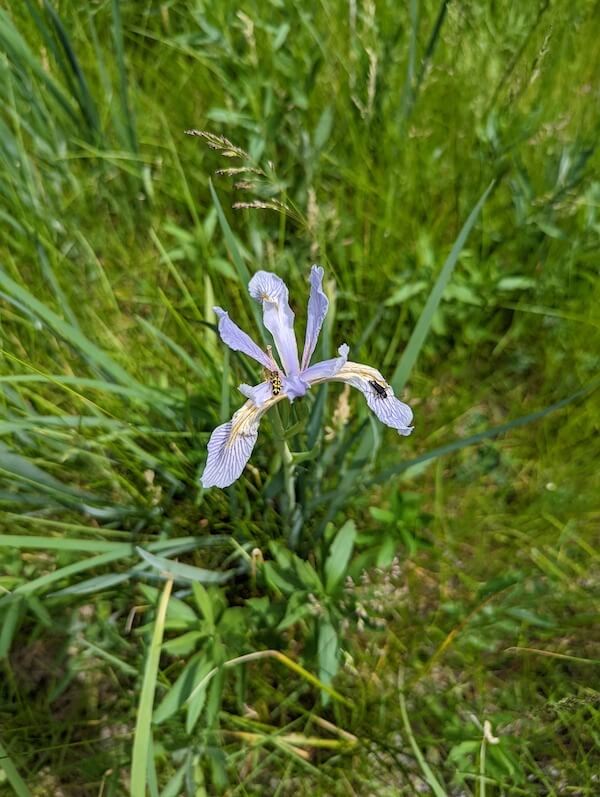
A broad range of results includes reestablishing 90 acres of historic wetland habitat, enhancing hydrology on 100 acres of existing wetland habitat, improving 225 acres of riparian songbird and waterbird breeding and migratory habitat, improving habitat for Willow Flycatcher, Great Gray Owl, and Western Pond Turtle(CA Species of Concern), increasing groundwater storage by an estimated 77 million liters/year, increasing late season base flows to Ackerson Creek and South Fork Tuolumne River, and improving public access and recreation opportunities.
The Ackerson Meadow Restoration Project is driven by a coalition of organizations including American Rivers, Stanislaus National Forest, Yosemite Conservancy, and Yosemite National Park. This project was funded in part by the donors of American Rivers, Bonneville Environmental Foundation, California Department of Fish and Wildlife, California Wildlife Conservation Board, Google (in association with their Water Stewardship pledge and strategy), National Park Foundation (provided by The Coca-Cola Company, The Coca-Cola Foundation, and Stericycle), National Park Service (provided by Bipartisan Infrastructure Law-Ecosystem Restoration, Concessions Franchise Fee, and NPS Operations), US Forest Service, and the Yosemite Conservancy.
Hoyt-Purdon Fuel Reduction and Prescribed Fire Project
The Hoyt-Purdon Fuel Reduction and Prescribed Fire Project encompasses 570 acres of private land, extending along approximately two miles of the South Yuba River in Nevada County, California. The project will reduce wildfire risk and impacts for six nearby communities and the Yuba watershed, resulting in multiple watershed, ecological, community, and capacity benefits and will increase the pace of ecologically sound forest management in the long term. It will employ a combination of hand and mechanical thinning and prescribed fire treatments to reduce fuels and reduce the threat of high-severity wildfires directly adjacent to the South Yuba River. This will protect the watershed and nearby communities that face the risks of impaired water quality and aquatic habitat, threats to water supply, and the loss of life and property. The Project will also restore a healthier and more natural forest structure and a more natural fire regime while building local capacity to pursue wildfire risk reduction projects using prescribed fire.
Faith Valley
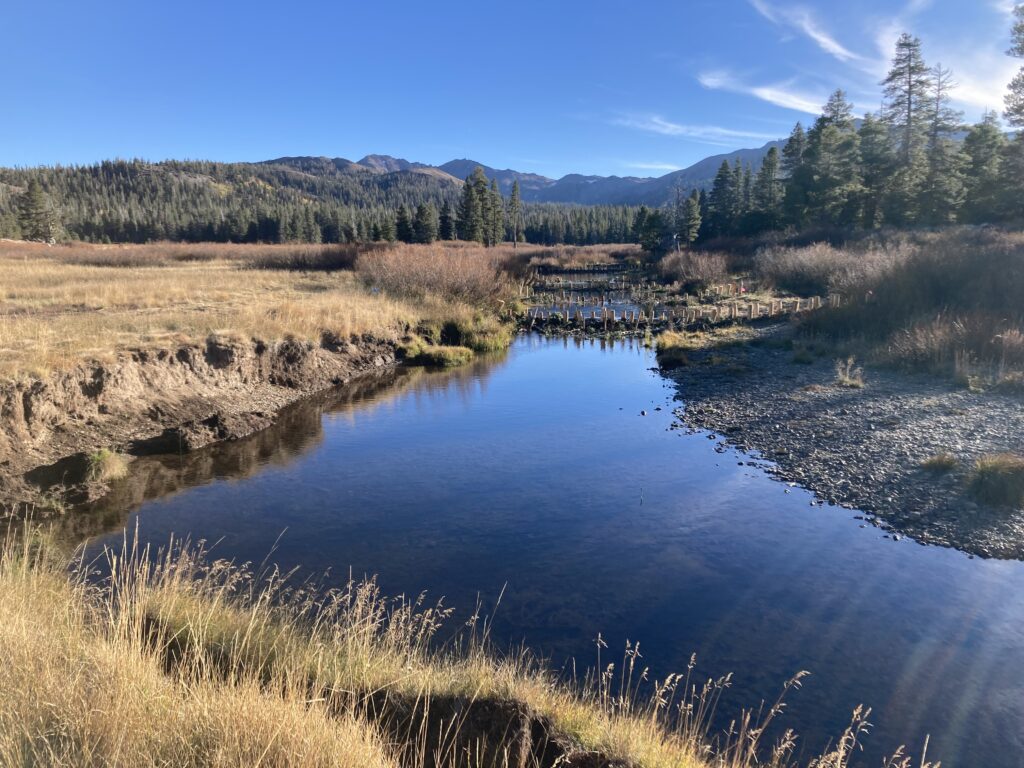
Faith Valley (200 acres) is in the Humboldt-Toiyabe National Forest, in the Upper West Carson watershed in the eastern Sierra Nevada. American Rivers and partners are working to protect and restore 110 acres of the meadow, as well as enhance recreation opportunities. Faith Valley has a resident beaver population that is helping to restore the meadow, however natural dams are frequently damage because they are built in deep, impaired channel that is disconnected from the floodplain We are using low-tech process-based restoration techniques that mimic natural beaver dams, called beaver dam analogs (BDAs) to accelerate restoration. Both natural dams and BDAs will raise the water table and capture sediment to reconnect the stream channel of the West Fork Carson River with its meadow floodplain, allowing for enhanced infiltration and groundwater storage and restored habitat for birds and aquatics. The project was implemented over two seasons (2022-2023) so that we could observe and learn from the initial pilot set of BDAs. Project activities included installing ~35 BDAs and a rocked grade control structure to anchor the overall project, as well as repairing the adjacent OHV road to protect the meadow and enhance recreation opportunities. We are conducting robust monitoring to quantify project benefits and implementing adaptive management with local partner, Alpine Watershed Group. The Faith Valley Meadow Restoration is a collaborative effort undertaken alongside the Humboldt-Toiyabe National Forest, Alpine Watershed Group, Institute for Bird Populations, Friends of Hope Valley, and Trout Unlimited.
Log Meadow
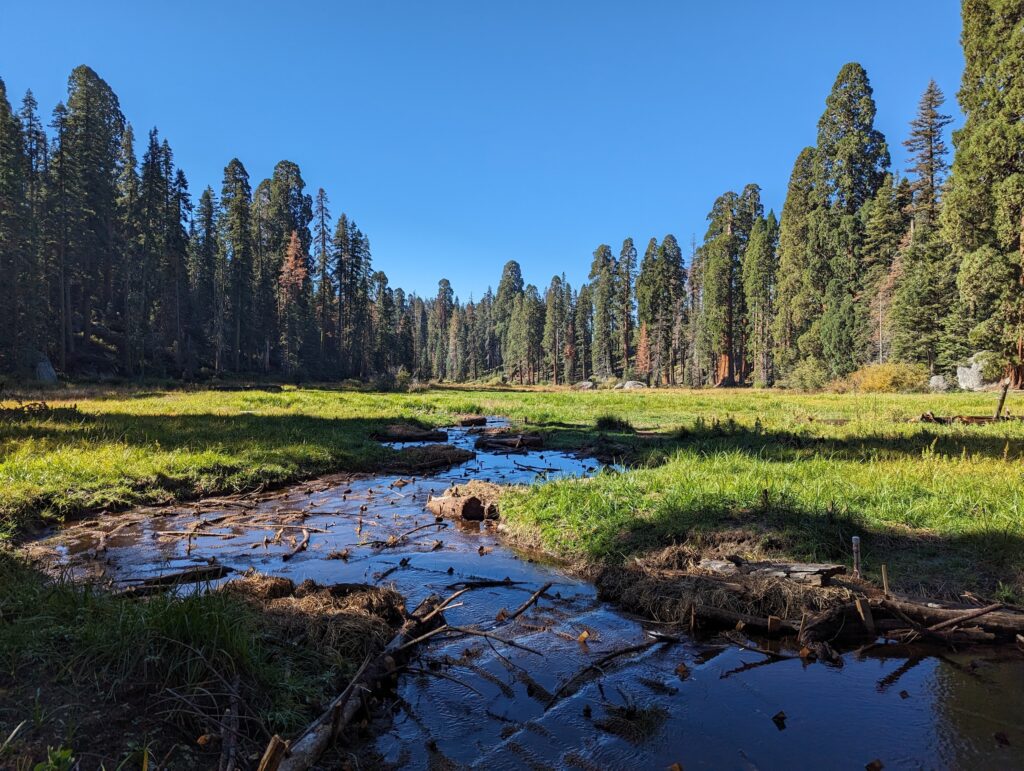
Log Meadow (18 acres) is in Sequoia and Kings Canyon National Parks, in the Middle Fork Kaweah watershed. The meadow is in Sequoia National Park’s Giant Forest, one of the world’s most important sequoia groves based on the land area, size of sequoias within the grove, and current conditions. To restore the meadow, we hired hand crews (California Conservation Corps, Walker Basin Conservancy, and American Conservation Experience) to fully fill the main gully with onsite vegetation. The crews scythed approximately 12 acres of the meadow, dried out the vegetation, and used hand balers to create hay bales. Then, the hay bales were packed into the main gullies until flush with the meadow floodplain, which effectively allows spring floodwaters to spread out and soak in, reducing peak flows and replenishing groundwater and prolonging streamflow in the summer. The larger goal of this project was to develop and test hand-–labor meadow restoration techniques to aid and inform future work in designated Wilderness where motorized vehicles and machinery are not permitted. Log Meadow Restoration was a collaborative effort undertaken alongside Sequoia and Kings Canyon National Parks and funded by the CA Department of Fish and Wildlife and the CA Wildlife Conservation Board.
Confluence Meadow
Confluence Meadow (140 acres) is in Lassen National Forest, in the Pine Creek watershed. The Pine Creek watershed is home to the endemic Eagle Lake Rainbow Trout (ELRT), a California Heritage Trout and a Species of Special Concern. In 2015, the U.S. Fish and Wildlife Service (USFWS), California Department of Fish and Wildlife (CDFW), and U.S. Forest Service (USFS) released a strategy guidance document called the Conservation Agreement for the Eagle Lake Rainbow Trout, which identified meadow restoration as a crucial ELRT recovery action. American Rivers is working collaboratively with the Pine Creek Coordinated Resources Management Program (CRMP) and Eagle Lake Partnership (ELP) to advance meadow restoration in the Pine Creek watershed to enable natural spawning and reproduction of ELRT. In 2022, American Rivers restored Confluence Meadow by completely filling the eroded Pine Creek channel, which allowed floodwaters to spread out and soak in, replenishing groundwater and prolonging summer streamflow, which improved habitat and increased baseflows in the critically dewatered Pine Creek for natural ELRT spawning. Confluence Meadow Restoration is a collaborative effort undertaken alongside Lassen National Forest, the Pine Creek CRMP, ELP, and funded by the CA Wildlife Conservation Board.
Click on each image to enlarge

